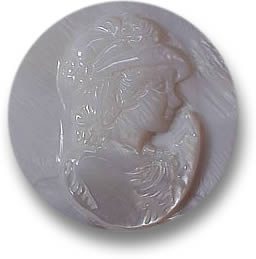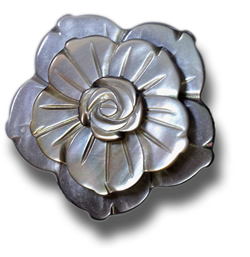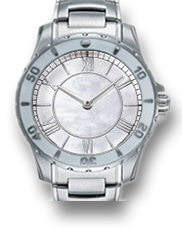Your Details
Your Details
|
Reviewed By Andreas Zabczyk
Why Buy Mother of Pearl Jewelry
Mother of Pearl Cameo for Pendant
Mother of pearl jewelry has long been admired for its natural beauty, versatility, and timeless elegance. Derived from the iridescent lining of mollusk shells, mother of pearl offers a unique blend of shimmering colors that can complement any style. Whether you're looking for a subtle addition to your everyday wardrobe or a statement piece for a special occasion, mother of pearl jewelry is an excellent choice. Its soft, lustrous appearance and organic origins make it a symbol of sophistication and grace, while its durability ensures that it remains a lasting treasure. In this article, we'll explore why buying mother of pearl jewelry is a wonderful investment for those seeking both beauty and versatility in their accessory collection. Explore our wide range of loose mother of pearl for sale. As its descriptive name suggests, mother-of-pearl is exactly that; the host or creator responsible for the growth of pearl. Mother-of-pearl may also sometimes be referred or advertised as simply 'nacre'. Nacre is the same material that makes up the composition of pearls, as well as various other materials too. By composition, mother-of-pearl nacre is a gem-quality hardened form of calcium carbonate. As a byproduct of fascinating marine organisms, mother-of-pearl is formed through a repetitive process of fine secretions by shellfish. As each secretion layers, it hardens in the form of extremely thin platelets, each measuring less than half a micron (0.00050 mm) in length. The platelets are composed of aragonite (calcium carbonate) and conchiolin, or conchin, which is a mixture of fibrous complex proteins.  Mother of Pearl Flower Doublet for Brooch
As the mixture of organic material grows within the shells, the result is a strong, resilient and glossy material. Most mother-of-pearl is usually white to gray in color, though other colors can also be formed through the growth of nacre. The attractive iridescence of mother-of-pearl is owed to the structured formation of alternating layers of platelets. As light strikes the glossy nacreous surface, it is reflected and scattered in the form of prismatic colors though the interference and diffraction of light. The spectacular show of light results in the optical phenomenon that has won over the hearts of millions upon millions of jewelers and jewelry manufacturers. Today, you can find mother-of-pearl in just about every retail jewelry store, as well as online gemstone suppliers too. Mother-of-pearl has become highly coveted among jewelry designers and manufacturers for its exquisite luster and iridescence, as well as its remarkable versatility. It is prominently used in crafting watch dials, buttons, pins, brooches, musical instruments, and various ornaments, besides being a favored choice for jewelry inlay. Particularly striking when paired with silver or black metal alloys and enamel, mother-of-pearl exudes a subtle yet distinctive allure. Some varieties, such as those sourced from conch shells, boast a porcelain-like sheen, adding to their appeal. For those seeking jewelry materials with the silky luster reminiscent of pearls, mother-of-pearl presents an affordable alternative. It remains accessible even in larger single-piece cameos or carvings, with solid gems weighing over 20 carats often priced at less than a dollar per carat. In contrast, cultured pearls, typically priced by size rather than weight, can command prices reaching hundreds of dollars per carat. This makes mother-of-pearl an attractive choice for both its aesthetic charm and economic value in jewelry design.  Mother of Pearl Watch Face
The benefits of mother of pearl are immeasurable. It is special not only for its luster and appearance, but also for its purity of nature. There are not many gems in this world that are as natural as mother-of-pearl, especially considering that is completely organic. Organic gems are those that were produced by living (or once living) organisms. The small group of organic gemstones includes amber, ivory, jet and ammolite. It is wonderful to know that most nacreous mother-of-pearl on the market today is produced by completely natural processes, unlike pearls which are almost always cultured. Pearls are cultured, but most people don't associate them with the term 'lab-grown', though technically they are depending on the definition. Despite the fact that even though they could be considered 'lab-grown', cultured pearl is certainly not synthetic; since synthetic has an entirely different meaning. However, the natural occurrence of pearl is incredibly rare, where naturally occurring mother-of-pearl is more widely available, and therefore has the advantage with regard to being natural and organic. Thus, it is not only more affordable, but mother-of-pearl is also much more easily found. It could be considered by many as one of the most essential gemmy materials today when it comes to jewelry. So if you haven't tried it yet, what are you waiting for? Add a splash of organic iridescence to bright up your own designs, whether they are antique ring designs, or simple plain pendants, you won't be disappointed. |
